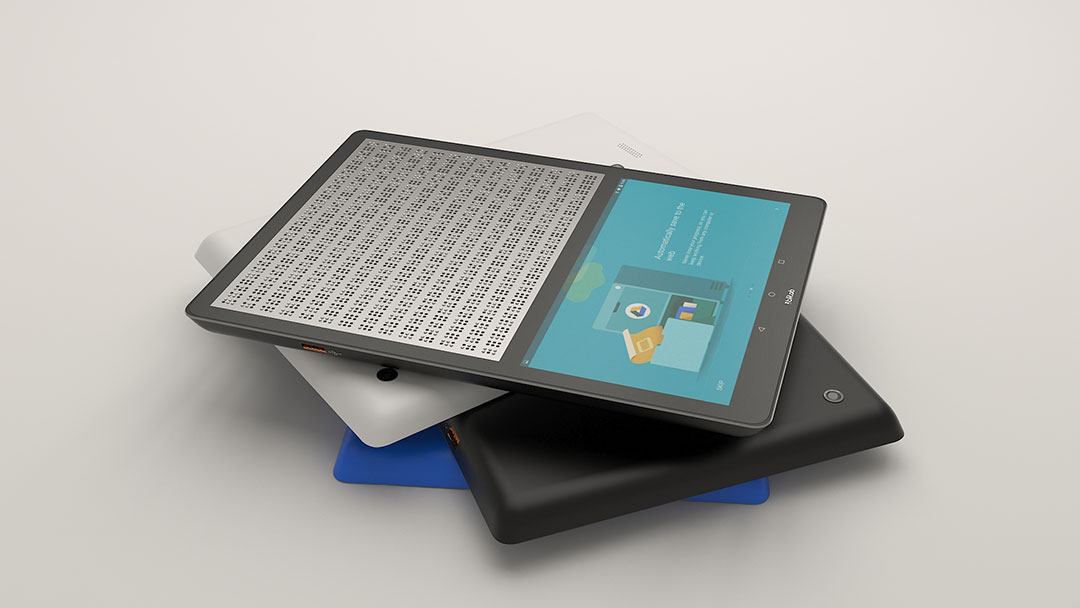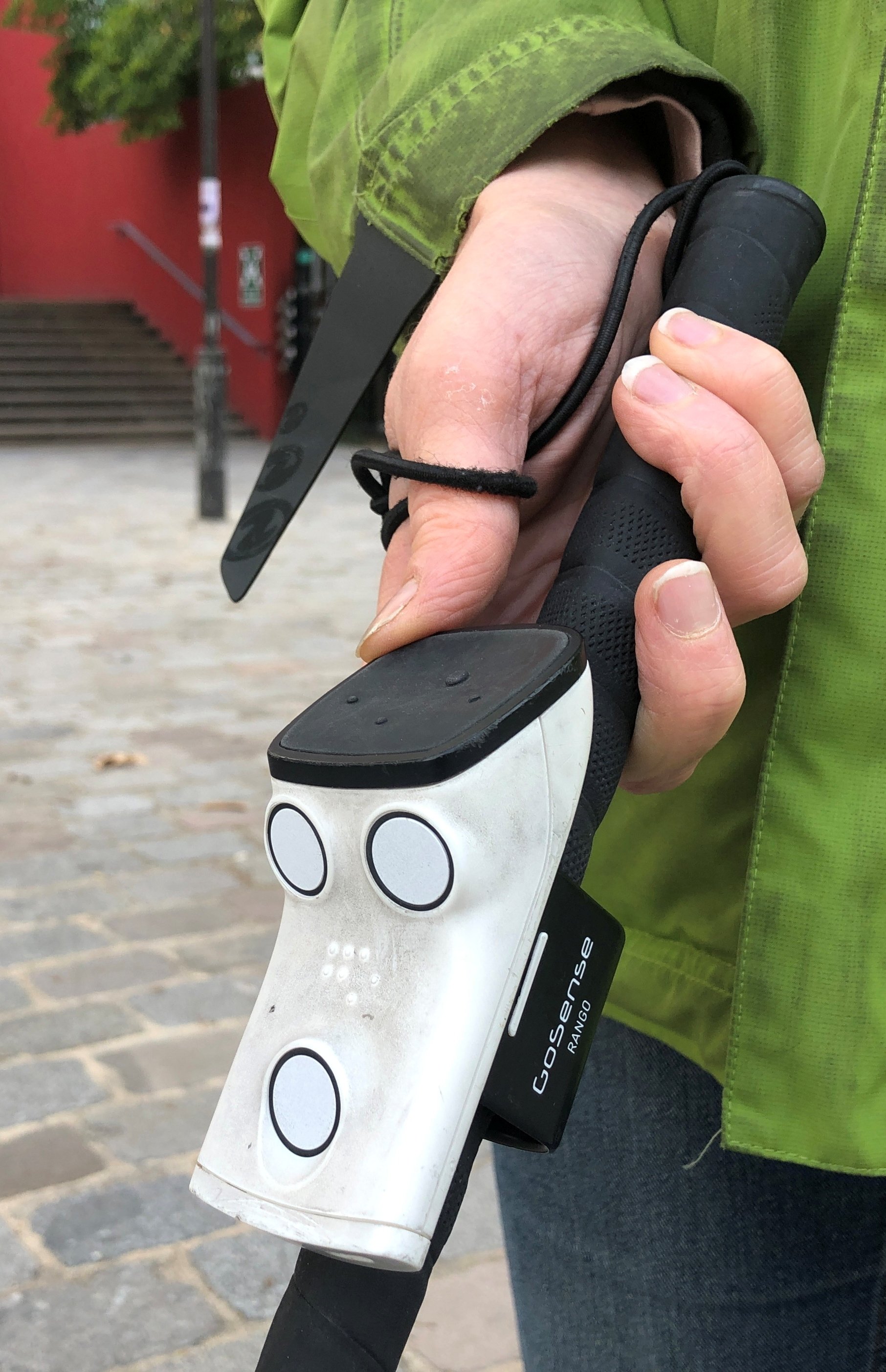Discover Innovative Tools Developed for the Aesthetically Impaired
The development of ingenious tools for the aesthetically damaged represents a substantial development in ease of access and freedom. Technologies such as wise glasses with AI capabilities and mobile applications developed to offer auditory descriptions are improving day-to-day experiences for users. Additionally, wearable devices that use haptic comments enhance ecological recognition, while modern-day Braille technologies provide new means to engage with text. As these tools remain to evolve, their effect on the lives of those with aesthetic problems raises important questions concerning the future of inclusivity and freedom in numerous elements of life. What lies ahead in this technical landscape?
Smart Glasses for Navigating

Smart glasses developed for navigating are revolutionizing the means aesthetically impaired people engage with their atmosphere. These innovative gadgets use a mix of electronic camera technology, expert system, and acoustic comments to offer real-time info concerning surroundings. By utilizing challenge discovery systems, smart glasses can inform users to possible hazards, enabling much safer flexibility in both unfamiliar and acquainted settings.
The assimilation of GPS innovation even more boosts navigating abilities, permitting users to get auditory directions as they relocate. This hands-free method not only cultivates independence however likewise encourages aesthetically impaired individuals to navigate metropolitan landscapes with increased self-confidence. In addition, many wise glasses are geared up with features that identify sites and road signs, giving contextual info that boosts the customer experience.
In addition, the development of these devices is continually advancing, with firms functioning to enhance the precision of item recognition and broaden the variety of navigational attributes. As smart glasses become extra budget-friendly and available, they hold the possible to substantially transform every day life for aesthetically impaired customers. Eventually, these ingenious tools represent an essential action towards inclusivity, offering improved flexibility and a higher feeling of autonomy for individuals navigating the globe around them.

Mobile Apps for Daily Living
How can mobile applications improve the lives of visually impaired individuals? Mobile apps are changing the way visually impaired individuals browse their environments, manage day-to-day tasks, and gain access to details. These applications supply vital support via different performances, cultivating independence and enhancing quality of life.
Several innovative mobile apps are designed especially for day-to-day living. For circumstances, apps like Be My Eyes link aesthetically damaged individuals with sighted volunteers using video clip calls, permitting them to receive real-time assistance with jobs such as reading tags or browsing unfamiliar areas. Similarly, Seeing AI, established by Microsoft, uses man-made knowledge to explain environments, read message, and determine items, efficiently transforming a mobile phone into a powerful tool for daily aid.
In addition, navigating apps customized for the aesthetically damaged, such as Aira and BlindSquare, offer audio-based instructions and environmental details, making it possible for users to traverse their environments safely and confidently. Past navigating and prompt help, mobile apps also sustain organization and task monitoring, with functions that aid users establish suggestions, create to-do listings, and track visits. In summary, mobile applications act as indispensable resources, encouraging visually damaged people to lead more independent and fulfilling lives.
Wearable Technologies for Help
Empowerment through innovation is progressively apparent in the world of wearable gadgets developed to assist visually damaged people. These innovative devices integrate flawlessly right into day-to-day life, boosting navigation and providing necessary comments to individuals. Smart glasses equipped with cameras can review and acknowledge faces message aloud, allowing individuals to communicate more confidently in expert and social settings.
One more noteworthy advancement is making use of haptic responses systems in wearable tools. These systems utilize resonances or other tactile signals to communicate details regarding the individual's environment, such as obstacles or changes in surface, improving flexibility and security. Wearable modern technologies likewise include wristbands that link to mobile phones, informing individuals to alerts with refined resonances, hence improving connectivity without dependence on visual signs.
As these innovations remain to develop, they are not just improving freedom for visually damaged individuals yet also promoting a higher sense of addition in society. By linking the void between difficulties dealt with in day-to-day living and the possibility for freedom, wearable modern technologies act as essential devices in the mission for equality and empowerment for those with visual problems.
Audio Description Devices
Sound summary devices play an important role in improving access for visually impaired individuals, providing them with the capacity to involve with aesthetic media. Speech-to-text devices for low vision. These tools offer narrated summaries of vital visual components in films, television shows, and live efficiencies, making sure that users can completely understand the context and emotions shared via visuals
Sound description can be incorporated into different systems, including streaming solutions, cinema testings, and live theater. Several preferred streaming services now consist of audio summary as an availability function, permitting visitors to choose it conveniently. Along with mainstream media, specialized apps additionally exist, providing audio descriptions for art events, galleries, and various other social occasions.
The performance of audio description rests on the ability of the storytellers, that should convey aesthetic information succinctly without detracting from the original sound. Advancements in this field are likewise leading the way for more personalized experiences, where individuals can adjust the level of detail and pacing according to their choices.
Braille Innovations and Gadgets
Braille tools and technologies have actually substantially transformed the way visually impaired individuals connect with message and details. Modern advancements have actually led to the development of versatile tools that improve proficiency and freedom among individuals.
Furthermore, portable Braille notetakers integrate standard Braille input with modern capabilities, promoting note-taking, scheduling, and record modifying on the move. AI-powered visual aids. These portable devices often feature text-to-speech abilities, bridging the space in between Braille and auditory details
In enhancement, cutting-edge Braille printers have actually emerged, enabling customers to generate Braille labels, records, and instructional products efficiently. This accessibility promotes greater involvement in professional and academic settings, ultimately promoting inclusivity.
In addition, research study into wise Braille modern technologies remains to increase. Tools that integrate expert system are being explored to supply real-time navigating support and contextual info, enhancing the individual experience in varied settings. In general, these advancements show a commitment to encouraging visually impaired individuals via technology, guaranteeing they can quickly access and engage with the world around them.

Conclusion
The development of ingenious devices for the visually damaged significantly boosts freedom and top quality of life. These innovations not only foster higher incorporation yet additionally promote freedom in everyday tasks, ultimately contributing to an extra equitable and available culture for aesthetically impaired individuals.
As clever glasses come to be much more accessible and budget friendly, they hold the possible to significantly change daily life for visually impaired individuals. Mobile apps are reinventing the means aesthetically damaged customers navigate their atmospheres, handle everyday tasks, and accessibility information. Apps like Be My Eyes connect visually damaged customers with sighted volunteers through video clip Smart glasses for the visually impaired calls, enabling them to receive real-time assistance with jobs such as reviewing tags or navigating unknown spaces.In addition, navigation apps customized for the aesthetically damaged, such as Aira and BlindSquare, offer audio-based instructions and environmental info, allowing individuals to traverse their environments securely and with confidence.The advancement of cutting-edge devices for the visually damaged significantly boosts self-reliance and quality of life.